Estimated reading time: 7 minutes
Wild foods (foods that are hunted, fished, or gathered) are the primary source of local food in Alaska. Wild foods include salmon and other fish, marine mammals such as seals and walruses, and land mammals such as moose, caribou, and deer. Birds, shellfish, and plants are also harvested. On average, 65% of Alaskans and 98% of rural Alaskans catch, hunt, or gather wild foods. As such, harvesting wild foods is not only a matter of food security, but an integral component of the Alaskan identity.
Alaska is at the forefront of climate change. Rising temperatures, altered precipitation patterns, changes to the cryosphere (the part of the Earth system made up of frozen water), and increasing instances of extreme events can threaten the habitat, distribution, and abundance of wild foods. Rising temperatures provide opportunities for invasive species to arrive and spread in Alaska, which could threaten native plants and animals, including those important for wild foods. Examples of invasives in Alaska include European green crab, elodea, and white sweet clover as well as parasites that transmit diseases such as trichinellosis and toxoplasmosis.
Meanwhile, people who rely on wild foods are also impacted by climate change. The location and timing of animal migration patterns have shifted, which can make locating and hunting animals more difficult. Coastal storms, early ice breakup, and other extreme events lead to unpredictable travel conditions that can put wild harvesters in danger and reduce access to critical food sources. Food storage facilities that rely on natural ice, such as permafrost cellars, can thaw in warming temperatures and affect the storage of wild foods and food security in rural communities. Because Alaska Natives rely on wild food harvest for cultural values, spirituality, and food security, their communities are disproportionately affected by climate change.
Impacts to Wild Fish and Crustaceans
At 46,600 miles long, Alaska’s shoreline is longer than the shoreline of all the lower 48 states combined. Alaska also has 365,000 miles of rivers. Unsurprisingly, fishing is a critical component of many Alaskan diets, particularly Alaska Native and rural diets. Fish are the most harvested wild food in Alaska, comprising 50-60% of the wild food harvested each year. Climate change threatens riverine and oceanic fish populations in Alaska.
Marine heatwaves are projected to increase in frequency and duration due to climate change. From 2014 to 2016, a series of marine heatwaves in the north Pacific Ocean (known as “The Blob”) hit the Gulf of Alaska. In 2018 and 2019, more marine heatwaves affected the Bering Sea. Sea ice coverage reached a record low, and ocean bottom temperatures hit record highs. Warming ocean temperatures and rising carbon dioxide levels can contribute to ocean acidification, which can harm plankton and other small organisms consumed by marine and anadromous fish.
These impacts can lead to food web collapse. Recent declines related to these marine events include a Gulf of Alaska Pacific cod crash, pollock declines, and a collapse of snow and king crab stock in the Bering Sea. Fish migration patterns are also changing. Some fish are shifting north by hundreds of miles, while other warm-water species are moving into Alaska’s waters. Changes to fish migration patterns can challenge harvesters and affect food security by making fish more difficult to locate.
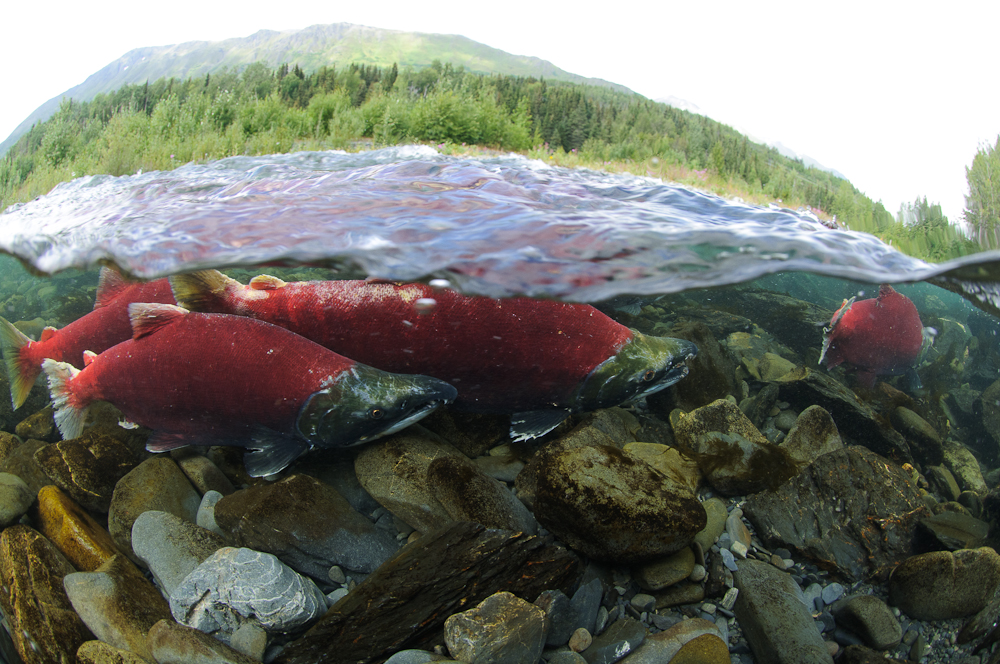
Salmon account for 32% of wild foods harvested by rural residents each year. Salmon are anadromous fish, meaning they spend part of their lives in freshwater and part in the ocean. Rising river temperatures can shift the abundance of prey, reduce levels of oxygen in rivers, and increase salmon susceptibility to disease and parasites. More extreme floods and droughts are making some river habitats less suitable for incubating eggs and small juveniles. In recent years, salmon runs have seen widespread declines and four of the five species of wild Alaskan salmon have shrunk in average fish size. Rising water temperatures have intensely impacted salmon in the Yukon and Kuskokwim Rivers, with the Yukon salmon fishery experiencing its lowest runs ever in the summer of 2021. However, for some salmonid species, such as pink salmon, warming is increasing their freshwater habitat and improving their early survival in marine environments. In addition, Bristol Bay’s 2022 sockeye salmon run was the largest ever recorded. Because of natural variations in fish populations related to the Pacific decadal oscillation, determining the explicit effects of climate change on Alaskan fisheries requires more research.
These examples illustrate that climate change is shifting historical patterns of salmon productivity across the state. In the 5-year period from 2018 to 2023, 17 formal and pending fishery disaster declarations were issued, compared to seven disaster declarations in the 32-year period from 1985 to 2017. In recent years, several fisheries throughout the state have closed or limited production due to decreases in fish. Subsistence Chinook salmon fishing along the Yukon has also closed, with major impacts to Alaska Native communities and ways of life. In addition to affecting communities who rely on wild harvest fishing, these declines in fish and crustacean populations have serious implications for commercial and recreational fisheries.
Impacts to Arctic Seabirds and Marine Mammals
Arctic seabirds and marine mammals are essential to the livelihoods and cultures of many coastal, rural communities in Alaska. Harvested seabirds and marine mammals include murres, auklets, gulls, cormorants, seals, sea otters, sea lions, and walrus. A small number of whales are also harvested by Alaska Natives. Many seabirds and marine mammal populations are declining due to climate change.
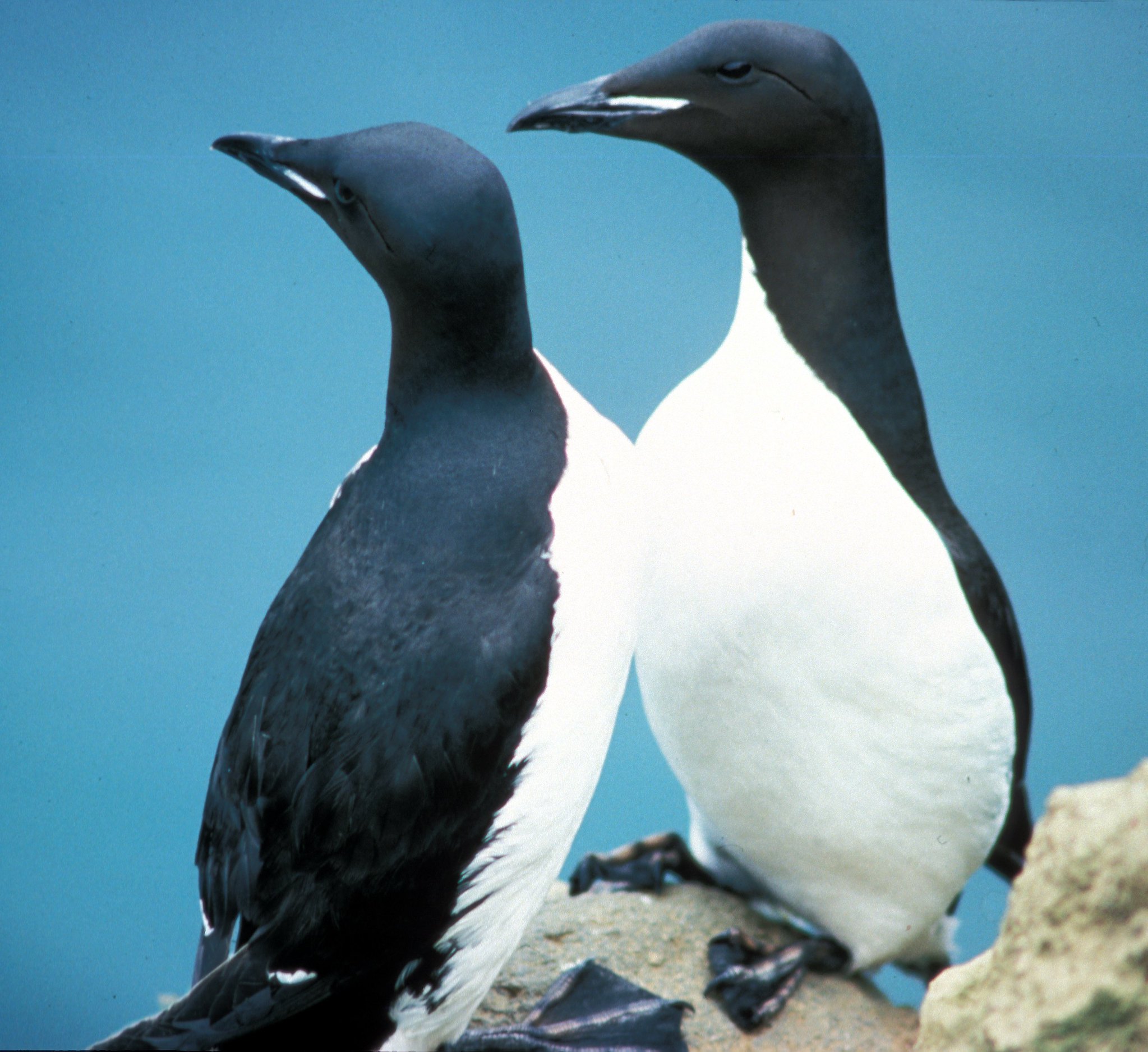
Seabirds are affected by some of the same climate impacts as marine fish. Like marine fish, many seabirds depend on prey like crustaceans, zooplankton, and small fish. Rising ocean temperatures can alter the migration and abundance of prey, which can make it difficult for seabirds to find prey. As such, these events can lead to massive seabird die-offs caused primarily by starvation. Seabird die-off events were rare in Alaska prior to 2015. However, every year from 2015 to 2022 has seen a massive seabird die-off event, including murres, puffins, fulmars, shearwaters, and auklets.
Decreases in sea ice extent have also impacted Arctic seabirds. Sea ice provides space for many species to breed, forage, and rest. Sea ice loss and rising ocean temperatures are leading to reproductive failure, increased mortality, and changes in migratory patterns for many seabird species. Meanwhile, exposure to harmful algal blooms, which could increase with climate change, has also led to mortality in some species.
Marine mammal populations remain generally healthy in Alaska, though they are also affected by climate change. For example, the migratory patterns, distribution, abundance, health, and behavior of some marine mammals, including walrus and whales, are shifting. Recent years have also seen mass strandings of seals, as well as fin, humpback, and gray whales associated with the decreasing extent and thickness of sea ice. Diminishing sea ice also limits access to prey for polar bears, a species that hunts exclusively from the surface of sea ice. Polar bears are experiencing particularly severe effects from climate change in Alaska and northern Canada.
Impacts to Land Mammals
Land mammals, including moose, caribou, Dall sheep, and American beaver, are a critical component of many Alaskan diets. Land mammals are likely to experience varied effects related to climate change. For example, larger, more severe wildfires and changing precipitation patterns have affected available forage for caribou, which is decreasing their numbers in some areas of the state. On the other hand, populations of moose and Sitka black-tailed deer are likely to grow as milder winters and deciduous shrub and tree expansion increase their habitat. As the moose population rises, it is likely that wolf populations will also increase. Increased wolf predation, changes to the location and abundance of some alpine plant communities (the favored forage of Dall sheep), higher winter snowfall, and increasingly common icing events could affect sheep distribution and abundance. Beaver populations are likely to increase in the short term as warming temperatures shift their habitat northward. Rapidly expanding beaver engineering disturbs fragile tundra, thaws permafrost, and could complicate fishing and hunting access for wild harvesters.
Looking Toward the Future
Wild foods are an integral component of food security for Alaskans, especially those living in rural areas. The 2023 Alaska Food Security Taskforce recently released a report with information on Alaskan food sectors, including wild foods. The report notes that recognizing the value of wild food resources is important in Alaska, where their value is often invisible or implicit. The report also emphasizes that wild food harvest is more than just a way to meet nutritional needs – it is a critical component of Alaskan cultures and ways of life.
Rural wild food harvesters in Alaska have expressed a need for more information on changing biophysical processes (e.g., sea ice conditions), wildlife population-level responses (e.g., shifts in animal migration patterns), improving food security and community well-being throughout the state, and improving travel access for wild harvest. Despite enormous challenges, rural Alaskans are sustaining traditional wild harvest practices primarily through local decisions made by harvesters to manage climate change related risks. Currently, harvesters are employing adaptation strategies such as finding new hunting areas, substituting harvest species for other wild foods, altering processing tactics, or using different modes of transportation. However, additional legal, political, and managerial actions have potential to help Alaskans adapt to the impacts of climate change on wild food harvest.
Arctic Report Card 2022 – Produced by NOAA, this annual report card is a timely and peer-reviewed source for clear, reliable, and concise environmental information on the current state of different components of the Arctic environmental system relative to historical records.
Alaska Food Security Task Force Report – This report includes information on specific food system sectors and task force directives related to food security in the state.
Food Security and Wild Resource Harvests in Alaska – Produced by the Alaska Department of Fish and Game, this is a white paper on food security and wild food harvests in the state.
Alaska Berry Futures - Produced by University of Alaska-Fairbanks and Alaska Climate Adaptation Science Center, this resource provides current knowledge about northern berry species, exposes gaps in knowledge and informs Alaskans about how they can plan for changing berry resources associated with climate change.
Related Topics
-
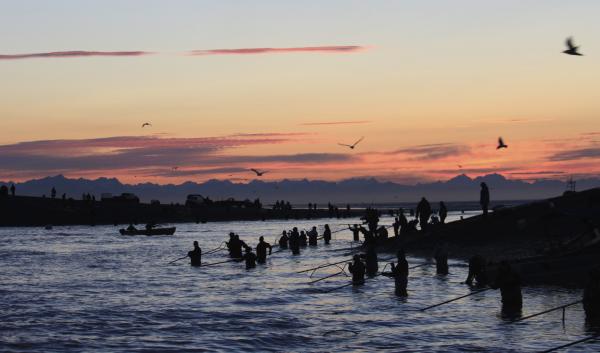
Food sovereignty is important to Northwest Tribal Nations. However, it is being affected by climate change.
-
Climate Change and Coastal Storms in Western Alaska
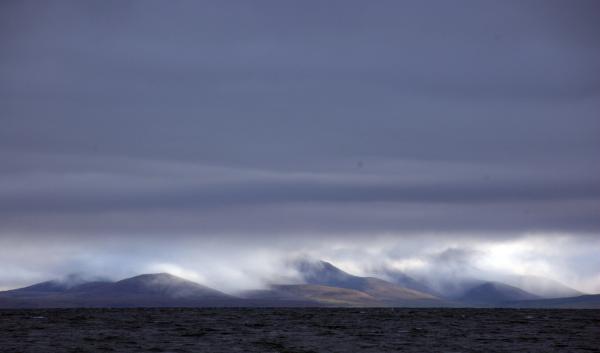
As ocean temperatures rise and sea ice declines, intense storms are likely to have a more significant impact on western Alaska’s coastal communities.
-
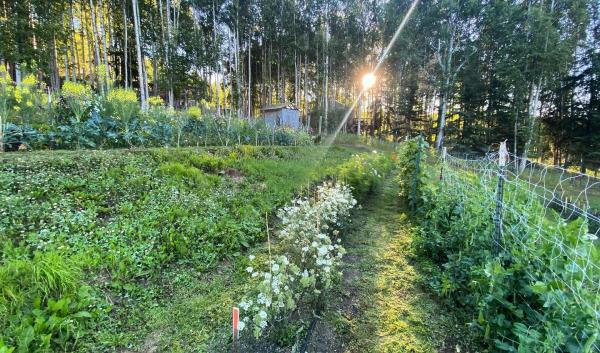
This Adaptation in Action profile highlights Calypso Farm’s efforts to increase community access to local food and agricultural education.

